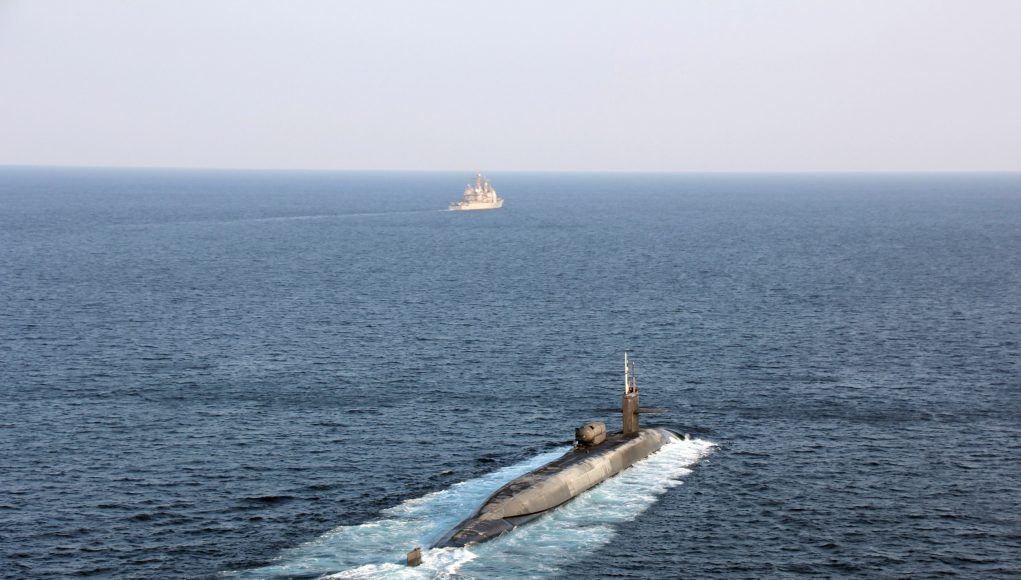O navă a Marinei americane a tras focuri de avertisment împotriva a peste o duzină de nave iraniene care se apropiaseră de un submarin american în Strâmtoarea Ormuz, a indicat luni Pentagonul, notează AFP.
Treisprezece vedete de atac rapid ale Gardienilor Revoluţiei, armata ideologică a Republicii Islamice, s-au apropiat la mai puţin de 140 de metri de şapte nave americane, înainte ca una dintre navele US Navy să tragă 30 de focuri de avertisment în două rafale pentru a le forţa să se îndepărteze, a detaliat purtătorul de cuvânt al Pentagonului, John Kirby.
Este al doilea eveniment de acest tip în două săptămâni.
“Din păcate, hărţuirea din partea Gardienilor Revoluţiei nu este un fenomen nou”, a insistat John Kirby.
“Este periculos, este neprofesionist. Acesta este genul de acţiune care se poate solda cu răniţi şi poate duce la erori de apreciere în regiune”, a subliniat el.
Purtătorul de cuvânt al Pentagonului a precizat că navele americane au dreptul la “autoapărare” şi că ştiu cum să folosească de acesta.
El a mai menţionat că aceste manevre au avut loc în strâmtoarea Ormuz, unde navele dispun de puţin spaţiu pentru a naviga.
La sfârşitul lui aprilie, trei nave iraniene de atac rapid s-au apropiat la mai puţin de 70 de metri de două nave americane în apele internaţionale din nordul Golfului Persic, provocând focuri de avertisment, potrivit US Navy.
Traficul petrolier prin Strâmtoarea Ormuz a fost în 2018 de 21 de milioane de barili pe zi, echivalent cu circa o cincime din totalul cererii mondiale din perioada respectivă, arată datele administraţiei americane pentru informaţii privind energia (EIA), scrie Agerpres.
In Strait of Hormuz, U.S. Vessels Exercised Right to Self Defense
Earlier today, 13 “fast boats” with the Islamic Revolutionary Guard Corps Navy precariously approached U.S. Navy and Coast Guard vessels that were operating in the Strait of Hormuz. After those ships failed to heed warnings to move away to a safe distance, the U.S. fired warning shots, Pentagon Press Secretary John F. Kirby said.
During a briefing today at the Pentagon, Kirby said it was six U.S. Navy vessels that were escorting the guided missile submarine USS Georgia which were involved in the incident.
“This group of fast attack boats approached the U.S. formation at high speed, closing in as close as 150 yards,” Kirby said. “After following all the appropriate and established procedures involving ships: horn blast, bridge-to-bridge radio transmissions and other ways of communicating, the [U.S.] Coast Guard Cutter Maui … fired approximately 30 warning shots from a 50 caliber machine gun. After the second round of warning shots, the 13 fast-attack craft from the IRGCN broke contact.”
Kirby said the Coast Guard cutter fired warning shots while the IRGCN ships were at the 300-yard mark and then again when they were at the 150-yard mark.
It’s not clear now under whose direction those IRGCN ships were operating, Kirby said. But he also added that harassment from the IRGCN is nothing new.
“Harassment by the IRGC Navy is not a new phenomenon,” he said. “It is something that all our commanding officers and crews of our vessels are trained … for when serving in the Central Command area of responsibility, particularly in and around the Gulf.”
The U.S. response to the harassment, Kirby said, was appropriate for the situation the American ships were in.
“Our commanding officers and crew of our ships — they have the right of self-defense and they know how to use that right,” he said. “They have the means at their disposal to defend their ships and their crews and they also, as I think we’ve seen now in this second incident, are very stringent about following the proper procedures for providing warnings: verbally first, and then if need be, through the use of warning shots to try to change or mitigate the Iranian behavior.”
Late last month on April 26, three IRGCN fast inshore attack craft approached U.S. Navy vessels in a similar fashion as today’s incident. Then, U.S. ships issued warnings as they did today. When those warnings failed, the USS Firebolt fired warning shots and the IRGCN ships moved away to a safe distance.
“This kind of activity is the kind of activity that could lead to somebody getting hurt, and could lead to a real miscalculation in the region, and that doesn’t serve anybody’s interests,” Kirby said.




